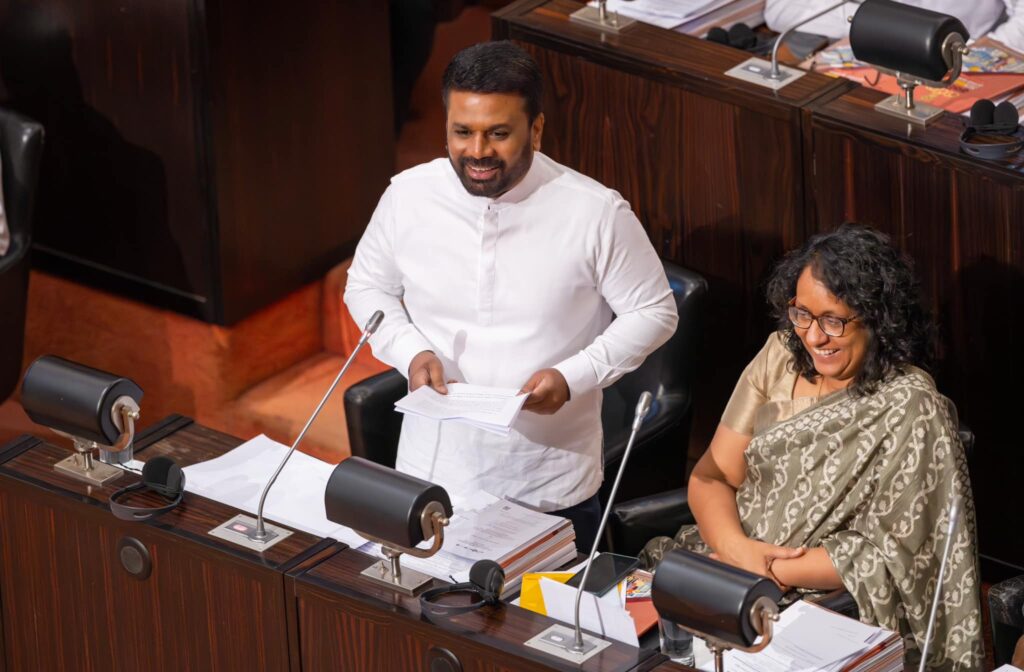Colombo, October 2025 — In a historic budget speech delivered to Parliament, Sri Lanka’s Finance Minister outlined a comprehensive plan aimed at steering the nation toward sustainable economic growth, social equity, and long-term stability. The 2025 budget, the first under the new government elected in late 2024, seeks to address the lingering effects of the 2022 economic crisis while laying the foundation for a more inclusive and prosperous future.
Key Budget Policies
Economic Stabilization and Growth
- The government aims to achieve a real GDP growth rate of 5% in 2025, supported by robust export growth, increased foreign investment, and enhanced productivity.
- A National Export Development Plan 2025-2029 will be introduced to boost exports of goods and services, targeting a record $19 billion in export revenue.
- The budget allocates Rs. 3,000 million to accelerate the digital economy, aiming to grow it to $15 billion, 12% of GDP, over the next five years.
Debt Management and Fiscal Discipline
- Following the completion of debt restructuring in December 2024, the government plans to leverage the fiscal space created by reduced debt servicing costs to strengthen external and fiscal buffers.
- A primary budget surplus of 2.3% of GDP is targeted, with strict adherence to the Public Financial Management Act, which limits primary expenditure to 13% of GDP.
Social Welfare and Poverty Alleviation
- The Aswesuma social welfare program will be expanded, with increased cash grants for the poor and extremely poor, raising monthly benefits to Rs. 10,000 and Rs. 17,500, respectively.
- A Rs. 232.5 billion allocation has been made for social protection programs, including support for vulnerable groups such as the elderly, disabled, and kidney patients.
- The government plans to establish a development bank to improve access to finance for SMEs and rural entrepreneurs, addressing long-standing challenges in collateral-based lending.
Infrastructure and Public Transport
- Rs. 3,000 million has been allocated to modernize public transport, including the introduction of 100 low-floor, air-suspension buses in Colombo.
- The budget also includes Rs. 500 million for the rehabilitation of old railway coaches and Rs. 250 million for the construction of new coaches to improve rail services.
Agriculture and Food Security
- The government will continue the fertilizer subsidy for paddy farmers, with Rs. 35,000 million allocated for 2025.
- A Rs. 5,000 million allocation has been made to maintain a healthy buffer stock of rice to stabilize prices and ensure food security.
- Initiatives to increase production of other field crops, such as green gram, black gram, and maize, will be supported with Rs. 500 million.
Tourism and Digital Economy
- The tourism sector will focus on value generation rather than just arrivals, with Rs. 500 million allocated for infrastructure development and destination branding.
- The digital economy will be bolstered by the introduction of Sri Lanka’s Unique Digital Identification SL-UDI system and the expansion of digital payment infrastructure.
Governance and Anti-Corruption
- The government has prioritized governance reforms, with the establishment of a Holding Company to improve the management of state-owned enterprises.
- Anti-corruption measures will be strengthened, including the enactment of the Proceeds of Crime Bill and enhanced support for the Commission to Investigate Allegations of Bribery and Corruption.
Education and Healthcare
- Rs. 135,000 million has been allocated to improve the quality of the university system, while Rs. 10,000 million will be used to upgrade school infrastructure.
- The health budget has been significantly increased to Rs. 604,000 million, with Rs. 185,000 million earmarked for pharmaceuticals and medical supplies.
Energy and Renewable Resources
- The energy sector will focus on diversifying sources, with an emphasis on renewable energy. The government will welcome investments that offer the lowest tariffs, ensuring competitive energy costs for industries and consumers.
- A 50MW wind power project has been awarded at a tariff of USD 4.65 cents per unit, setting a benchmark for future renewable energy projects.
Regional Development
- The budget includes Rs. 5,000 million for the rehabilitation of rural roads and bridges in the Northern Province, aiming to integrate the region into the national economy.
- A comprehensive development program for the Eastern Province will be implemented with Indian grant assistance, focusing on infrastructure, education, health, and agriculture.
Conclusion
The 2025 budget reflects the government’s commitment to addressing the root causes of Sri Lanka’s economic crisis while ensuring that growth is inclusive and benefits all segments of society. By focusing on fiscal discipline, social welfare, and strategic investments in key sectors, the government aims to build a resilient economy capable of withstanding future challenges.
As the Finance Minister concluded his speech, he emphasized the importance of unity and collective effort in achieving these goals: This budget is not just a set of numbers; it is a reflection of our shared vision for a prosperous, equitable, and sustainable Sri Lanka. Together, we will overcome the challenges of the past and build a brighter future for all.
The budget proposals will now be debated in Parliament, with implementation expected to begin in early 2025.






